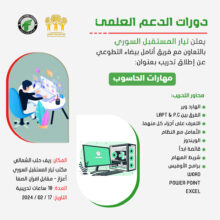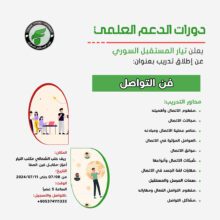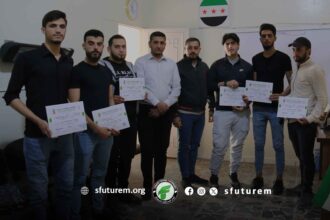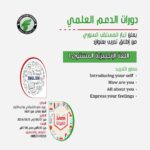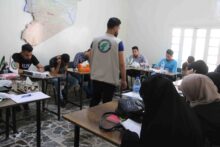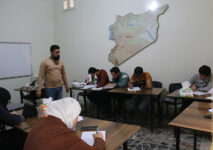The Syrian Opposition: A Solution to Assad’s Crisis
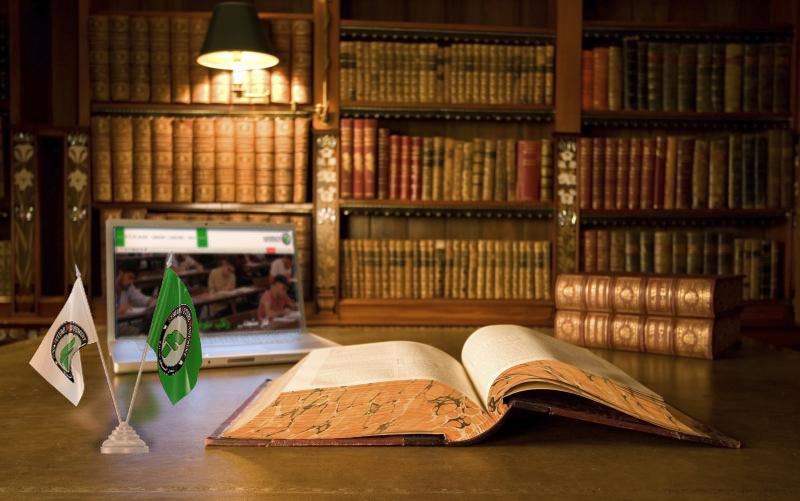
Introduction:
The euphoria of Assad’s supposed victories has faded, giving way to the realistic notion that this victory has only ended years of denial about the overall deterioration of the Syrian regime. From being the world’s leading captagon trafficker[1], to becoming one of the most heavily sanctioned regimes in the world[2], Assad’s triumphant façade has been shackled by complex issues that make any association with him perilous. In this paper, I attempt to provide an objective analysis of the valuable Turkish opportunity presented at the doorstep of the Syrian regime. I explore the potential role of reconciliation between the Syrian regime and the opposition as a means to save the regime, using a descriptive and analytical approach. My aim is to argue for this hypothesis with a cool, rational mindset, setting aside wishful thinking and bias.
Description:
The reality of Syria under Assad’s regime can be described through three different perspectives:
- Internal Perspective:
The Syrian regime has failed to establish control over more than a quarter of Syria’s territory, and this division has become almost normalized:
- Areas east of the Euphrates, accounting for 25.64% of Syrian geography since November 2019, include large parts of Deir ez-Zor, Raqqa, Hasakah, and parts of Aleppo in 2023.[3] These areas are controlled by the Syrian Democratic Forces (SDF), which “controls key Syrian oil fields… and is backed by U.S. forces in several bases in Kurdish-controlled areas. U.S. forces are also present in southern Syria at the al-Tanf base, established in 2016, near the Jordanian-Iraqi border, which holds strategic importance as it is located on the Baghdad-Damascus route.”[4] These areas, controlled by the SDF and supported by the international coalition led by the U.S., have become so entrenched that the SDF even created a lobbying group in the U.S. to protect itself from Turkey and the repercussions of the Caesar Act.[5] The region operates based on a tripartite structure (education, military strength, and organization).
- Education: The autonomous administration has imposed its own educational curricula in northeastern Syria since the 2014-2015 school year. In 2017, it trained around 600 teachers to teach these curricula and later shut down private schools and institutes that taught Syrian regime curricula.[6] The SDF’s curricula include ideas about establishing a “Kurdish state,” fighting to achieve it between Syria, Iraq, Iran, and Turkey, and feature the sayings of Kurdish leader Abdullah Ocalan, with large portions dedicated to promoting Kurdish leaders and separatist ideology.[7]
- Military Strength: The SDF has a force of around 45,000 fighters, over half of whom are Arab, according to a statement from the U.S. Department of Defense.[8] This military power has likely expanded since then.
- Organization: In the past year, the General Council of the Autonomous Administration for North and East Syria, affiliated with the SDF, issued a revised social contract known as the “Social Contract for the Democratic Autonomous Administration of the North and East Syria Region.” This document is similar to the Kurdistan Regional Government (KRG) structure in Iraq. The revised contract contains four chapters with 134 articles, addressing basic principles, rights, societal organization, and general provisions.[9] I have detailed the historical and current composition of the SDF in a previous study.[10]
- Areas west of the Euphrates are controlled by the legitimate opposition represented by the Syrian National Coalition and supported by Turkey. These areas, which include a border strip extending from Jarabulus in northeastern Aleppo to Afrin in the west, are governed based on a tripartite structure (Turkification, open markets, and gathering rebels).
- Turkification: Turkey sees itself as the guardian of more than 8,800 square kilometers under opposition control, thanks to three military operations (Olive Branch, Euphrates Shield, and Peace Spring). One of the most prominent features of the region is the establishment of Turkish curricula, with millions of textbooks printed for this purpose, and the issuance of new personal documents bearing the Turkish flag, alongside the widespread use of the Turkish lira.[12] Turkish flags are even raised over almost all areas, including opposition government offices, and Turkish officers are responsible for appointing and promoting officials.[13]
- Open Market: Turkey allows the export of goods from northern Syria, facilitating trade that sometimes exceeds $700 million, with no political or economic obstacles. Foreign currencies, particularly the U.S. dollar, circulate freely, serving as a lifeline for the regime’s access to foreign currency after the Lebanese banking crisis cut off its traditional access.[14] As a result, the Syrian regime has reportedly sought ways to siphon dollars from northern Syria.[15]
- Gathering Rebels: Turkey provides a haven for those who reject Assad, radical groups, and the SDF, offering them military and political representation.
- Idlib: Idlib is controlled by Hay’at Tahrir al-Sham (HTS), which “now controls nearly half of Idlib province in northwestern Syria, as well as small parts of Aleppo, Hama, and Latakia. The area also hosts other less powerful armed factions and declining extremist groups like the Turkistan Islamic Party, which includes Uyghur militants.”[16] These Salafi-jihadist groups are sustained for one main reason: to “localize global jihadism,” preventing it from spreading internationally. This makes Idlib linked to international issues, with the risk of global jihadism spilling over if the local Sunni entity, carefully managed by figures like Ahmad Zaidan, former Al Jazeera bureau chief in Pakistan and a fierce advocate for the Sunni entity project led by HTS,[17] collapses. This could increase the global threat, potentially repeating the events of September 11th. The governance of Idlib relies on strict governance and the replacement of religious fervor for popular representation.
The Most Notable Actions Taken to Consolidate Its Rule:
- Transferring all powers from local councils to relevant ministries.
- Assigning the relief portfolio to the Ministry of Development after it was previously handled by local councils.
- Transferring the building permit portfolio to the Ministry of Local Administration.
- Weakening the representation of local councils at the local level and appointing members through the Ministry of Local Administration.
Additionally, the government, in cooperation with the Authority, sought to strengthen its societal control through various steps, including:
- Launching strategic projects such as the industrial city and regulating communications and water.
- Establishing a body called the “General Administration of Checkpoints,” whose personnel are deployed in its areas of control.
- Repairing some roads, water networks, and sewage systems, and offering agricultural loans.
- Restricting the spread of weapons and armed displays, organizing the military into brigades, and establishing a military academy.
- Regulating the work of NGOs and extracting licenses for operations.”[18]
Regarding the consolidation of religious zeal, it aimed to establish a Sunni entity and make it attractive for capital investment.
2- The Second Perspective: Foreign Forces:
These forces are divided into three types:
- First Type: The regime’s allies, who have become a burden for two reasons:
- Their constant reminder that they are the reason for the regime’s survival. For instance, Ali Agha Mohammadi, a member of Iran’s Expediency Council, stated that General Hossein Hamedani, a former commander of the Iranian Revolutionary Guard, prevented Bashar al-Assad from retreating and fleeing Syria in defeat[19]. Similarly, Russia, after diplomatic tensions, had its ambassador to Syria, Alexander Yefimov, dismiss rumors of a rift between Russia and the regime in 2020, stating that such “rumors and insinuations” had no basis[20].
- Strengthening their influence by seizing Syria’s state assets through agreements and solidifying their military positions and strategic routes[21].
- Second Type: Turkish Forces, which benefit from two sources of legitimacy: the legitimacy of the Syrian opposition and the legitimacy of the Adana Agreement, which Turkey seeks to amend to facilitate its expansion and longevity.
- Third Type: International Coalition Forces, which operate independently of Syrian will, driven by international consensus to combat the Islamic State (ISIS)[22].
3- The Third Perspective: Foreign Relations:
The Syrian regime has tried to normalize its relations with the international community despite the many contradictions it faces. It initially sought to activate reconstruction projects, but when that failed[23], it turned to early recovery projects, arguing that these would “entrench the power of the warring factions on the ground—especially the regime—and reduce the chances of finding a sustainable political solution. Damascus would indirectly benefit, as countries seeking to normalize relations with the regime would interpret the easing of restrictions on early recovery as another sign of reduced Western objections to normalization”[24]. However, these efforts have yet to succeed due to Western sanctions.
In the Arab world, the Syrian regime has been unable to align with the demands of the Arab League, which aimed to implement measures in line with the Geneva resolutions, particularly UN Security Council Resolution 2254, which calls for the formation of a transitional government with full powers. This step-by-step initiative[25] has been stalled after the Arab ministerial committee’s failure to overcome Assad’s resistance to any form of power-sharing with the Syrian opposition or to the return of refugees without first initiating early recovery projects, which in turn have been hampered by Western sanctions.
The Syrian regime is now deeply entrenched in a complex, multi-layered quagmire, making its predicament too convoluted to resolve despite the extended hands of assistance. The only remaining lifeline seems to be the once unthinkable—reconciliation with its longtime adversary, the Syrian opposition.
The Syrian Opposition: Role and Leverage
- Four main actors play significant roles on the Syrian political stage: the Syrian regime, the Syrian Democratic Forces (SDF), Hay’at Tahrir al-Sham (HTS), and the legitimate Syrian opposition.
The SDF plays an active role within the structure of the international coalition but lacks international recognition as a Syrian party at the negotiating table with the regime to reach a national settlement. This leaves it marginalized or seen as an easier actor to dismiss, lacking strong international backing.
Hay’at Tahrir al-Sham, on the other hand, voluntarily abstains from any political role under the international community’s auspices, either due to its ideological stance against political solutions or because of its listing on terrorism watchlists.
Meanwhile, the Syrian opposition retains the legitimacy of international recognition as the sovereign counterpart to the Syrian regime, shaping its role and establishing a structural position in the Syrian arena.
- Through this role, the Syrian opposition holds five key leverage points that could potentially rescue the Syrian regime:
- Rehabilitating the Regime Domestically and Internationally:
Domestically, normalization with the opposition could be built on several pillars to address the root causes of the Syrian internal conflict. These include stopping the persecution of wanted individuals, the return of displaced people to their homes, and the curbing of security apparatus interference in political and social life[26]. Internationally, the opposition’s recognition would eliminate the international community’s primary argument for not politically recognizing the regime. With the regime already enjoying legal recognition[27], and the opposition having political recognition[28], their unification could lead to a new political and legal acknowledgment, pulling the regime out of its deadly isolation. - Control Over Key Economic and Strategic Routes:
The opposition holds veto power over the M5 highway[29], and its territories are open to international markets via Turkey. This access, along with the significant flow of U.S. dollars into opposition-controlled areas, could meet the regime’s need for geopolitical positioning by opening international trade routes, allowing imports and exports, and bringing in foreign currency. This would provide a crucial economic lifeline to the deteriorating situation in regime-controlled areas. - Reconstruction and Debt Relief:
Reconstruction is a key factor in rescuing the regime from the debts owed to its allies. By engaging in a political solution that involves the opposition, the reconstruction process could begin, enabling debt repayment and preventing the regime from being further undermined by its allies[30]. - The Refugee Crisis:
The refugee issue remains a significant pressure point for the regime. While it is a fundamental international demand on the regime, it lacks the infrastructure and logistical capacity to facilitate the return of refugees. The opposition, however, holds the leverage of popular acceptance for refugee repatriation by alleviating their political fears. With the launch of reconstruction projects, the economic concerns of refugees could also be addressed, allowing the opposition to assist the regime in resolving the refugee issue comprehensively. - The Southern Front with Israel:
Unifying the Syrian stance on Israel could relieve the regime from the full responsibility of the southern front. This would enable the regime to distance itself from the “Axis of Resistance” narrative and instead adopt a national stance, one of the byproducts of normalizing relations with the opposition and including them in the executive and legislative branches of power.
Challenges:
The challenges facing the reconciliation or recognition of the Syrian opposition by the Syrian regime can be divided into:
- Internal Challenges:
It seems that internal challenges are endless. The most significant of these challenges include:
- The Regime’s Structure: The Syrian regime itself[31] is resistant to accepting political pluralism due to its institutions being built around the deification of the president, particularly the military and intelligence agencies.
- Large Popular Base in Northern Syria: There is a significant popular base in northern Syria that may accept any option except normalization with the Assad regime, due to years of personal and sectarian vendettas.
- Opposition Capability: The opposition must start and complete the normalization process, either because of the regime’s significant decline or because of the capacity of Syrian parties rejecting reconciliation to eliminate it. This is especially true considering the presence of over half a million armed Syrians in northern Syria, including residents and activists within factions, or due to the loss of legitimacy based on the narrative of fighting the regime.
- Islamic Groups: Groups like Hay’at Tahrir al-Sham[32] reject any form of reconciliation with the regime and may receive Western support that could undermine or even reverse the Turkish plans.
- External Challenges:
Similarly, external challenges to reconciliation between the regime and the opposition are numerous. The fragmentation due to the Syrian crisis has become an international turning point, impacting beyond Syrian borders and affecting Ukraine and Gaza, potentially leading to changes in the international system as a whole. Key external challenges include:
- American and European Pressure: In addition to the positions of the United Nations, which could hinder the re-legitimization of Bashar al-Assad.
- Uncertain Turkish Intentions: There is skepticism about Turkey’s genuine desire for reconciliation, as opposed to merely pursuing its interests. This is particularly relevant given the regime’s lack of real need for Turkey and its failure to meet Turkish conditions regarding refugee return or combating terrorism (SDF)[33]. This suggests that Turkey may use the Assad regime rather than the other way around, with Turkish presence in Syria appearing far from temporary, given the ongoing Turkification.
- Iran’s Ambiguous Stance: Iran’s stance on losing its strategic ally (Assad) is cloudy, as its primary concern is exploiting Assad’s singular control to ensure freedom of movement for its militias.
A Valuable Opportunity:
The current Turkish initiative to call for normalization with the Syrian regime represents a valuable opportunity for the regime, compensating for the failure of the Arab League’s initiative and potentially supporting it in some way. This is particularly evident with the positive stance of Egyptian President Abdel Fattah el-Sisi (Egypt is part of the Arab League ministerial committee) towards rapprochement between Ankara and Damascus[34]. This opportunity is not only about normalizing relations with Turkey but also with the Syrian opposition, which is its ally. Missing this chance may not come again due to the historic agreement between Turkey and opposition leaders on the path to normalization, aiming to implement related Geneva resolutions and start a genuine political solution. The absence of Turkish involvement, if the regime misses this opportunity, could make repetition unlikely due to differing public sentiment and political desires, presenting a challenge to the opposition itself. However, with Turkey’s assistance, overcoming these challenges might be easier through careful steps that undermine opposition to normalization, convince the popular base of the feasibility of a genuine solution, especially if detainee issues are resolved transparently, and if the security apparatuses, which have been the main cause of Syria’s troubles, are curtailed. Additionally, recognizing the Syrian opposition’s presence in Damascus as legitimate and integrating or dissolving military forces to establish a national army (which could be a professional volunteer force) supported by both regime and opposition allies would be crucial.
Conclusion:
From a national perspective, the recommendation for decision-makers in the Syrian regime is that their genuine interest in escaping their complex quagmire lies in achieving true reconciliation with the Syrian opposition through the Turkish gateway, which has serious and effective communication with the opposition and the capability to assist in successful reconciliation. Despite the massive and significant challenges ahead, this path remains the shortest, safest, and most satisfactory for all parties.
Jomaa Mohammad Laheep
Political Office
Research and Studies Department
Study
Syrian Future Movement
References and Sources:
[2] Sanctions on Syria: Nothing to Be Cheerful About (aljumhuriya.net).
[3] Syrian National Liberation Team, A Comprehensive View of the Control Map in Syria until Early 2024, 2024, at A Comprehensive View of the Control Map in Syria until Early 2024.[4] How is the Military Control Map in Syria Distributed? | News | Al Jazeera (aljazeera.net).
[5] Kurdish Lobby Begins Pressuring in the United States – RT Arabic.
[6] Problems of “Politicizing Education” in “SDF” Areas (alaraby.co.uk).
[8] An Overview of the Syrian Democratic Forces – BBC News Arabic.
[10] See: Jomaa Mohammad Laheep, Objective Reading on the Relationship Between the SDF and Political Opposition, 2023, at Objective Reading on the Relationship Between the SDF and Political Opposition.[11] How is the Military Control Map in Syria Distributed? | News | Al Jazeera (aljazeera.net).
[13] Northern Syria: Turkish Authorities Work on Restructuring the “National Army” (alquds.co.uk).
[17] Hussam Jazmati, Abu Mohammad al-Jolani Facing Existential Challenges, 2024, Al-Jumhuriya at Abu Mohammad al-Jolani Facing Existential Challenges. [19] The publication of memoirs titled “The Fish Letter” by Iranian Field Commander General Hossein Hamadani, who was killed there in 2015, clarifies Iran’s central role in protecting Assad. See also: Iran and the Necessity of Assad’s Survival (alaraby.co.uk).[20] Russia and the Syrian Regime Disputes: Its Motives, Limits, and Prospects (dohainstitute.org).
[22] Addressing the Legitimacy Question: Fouad Khayter, in his research titled: The Legitimacy of International Intervention in the Current Syrian Crisis, Comparative Legal Studies, Hasiba Ben Bouali University, Faculty of Law and Political Science, Private Comparative Law Laboratory, Algeria, 2021, Volume 7, Issue 1 (June 30, 2021), pp. 630-652. [23] Eugenio Dacrema believes that Assad is not very concerned with reconstruction issues for two reasons mentioned in her article translated by Ahmed Aisha. However, the issue, in my opinion, is not the regime’s desire but its successors, who see reconstruction projects as a lifeline for the Syrian quagmire and an announcement of the end of the conflict and the beginning of debt and gains collection. See Eugenio’s article translated by Ahmed Aisha on Harmoon: Reconstruction of Syria: Assad’s Goals and Interests.[24] Early Recovery and Reconstruction in Syria Between Reality and Politics – OPC.
[25] Refer to my study titled: Law Against Normalization with Assad’s Regime for 2023 and the Trend Toward a Syrian Sect, in: Study No. (1): Law Against Normalization with Assad’s Regime for 2023 and the Trend Toward a Syrian Sect – Syrian Future Movement (sfuturem.org). [26] This is indeed our core demand from 2011, which was confirmed by the Suwayda Movement. See: Suwayda Expands Its Demands: “Stopping Security Forces’ Interference is a Right” (almodon.com). [27] An informative article by my friend Mustafa Al-Mustafa. See: On the Legitimacy of the Syrian Opposition and the Principle of Effectiveness (syria.tv). [28] At the end of 2012, in the “Marrakech Conference,” more than 120 countries participating in the Friends of Syria Conference recognized the National Coalition for Syrian Revolutionary and Opposition Forces as the “sole representative of the Syrian people,” and the practical recognition continues. [30] The Russians are nurturing Syrian military, political, and economic forces and personalities, similar to Iran which has a strong influence within the regime’s institutions and the Syrian community, with militias, military, political, and economic figures, and visible and hidden currents in the army and security agencies. See the Arab Center Study: Russia and the Syrian Regime Disputes: Its Motives, Limits, and Prospects. [31] Raymond Hinnebusch, in his book titled: The Formation of the Totalitarian State in Baathist Syria, translated by Hazem Nahar, Riyadh Riss Press, Beirut, 2014, has drawn a picture that enables understanding the Syrian regime and its rigidity.